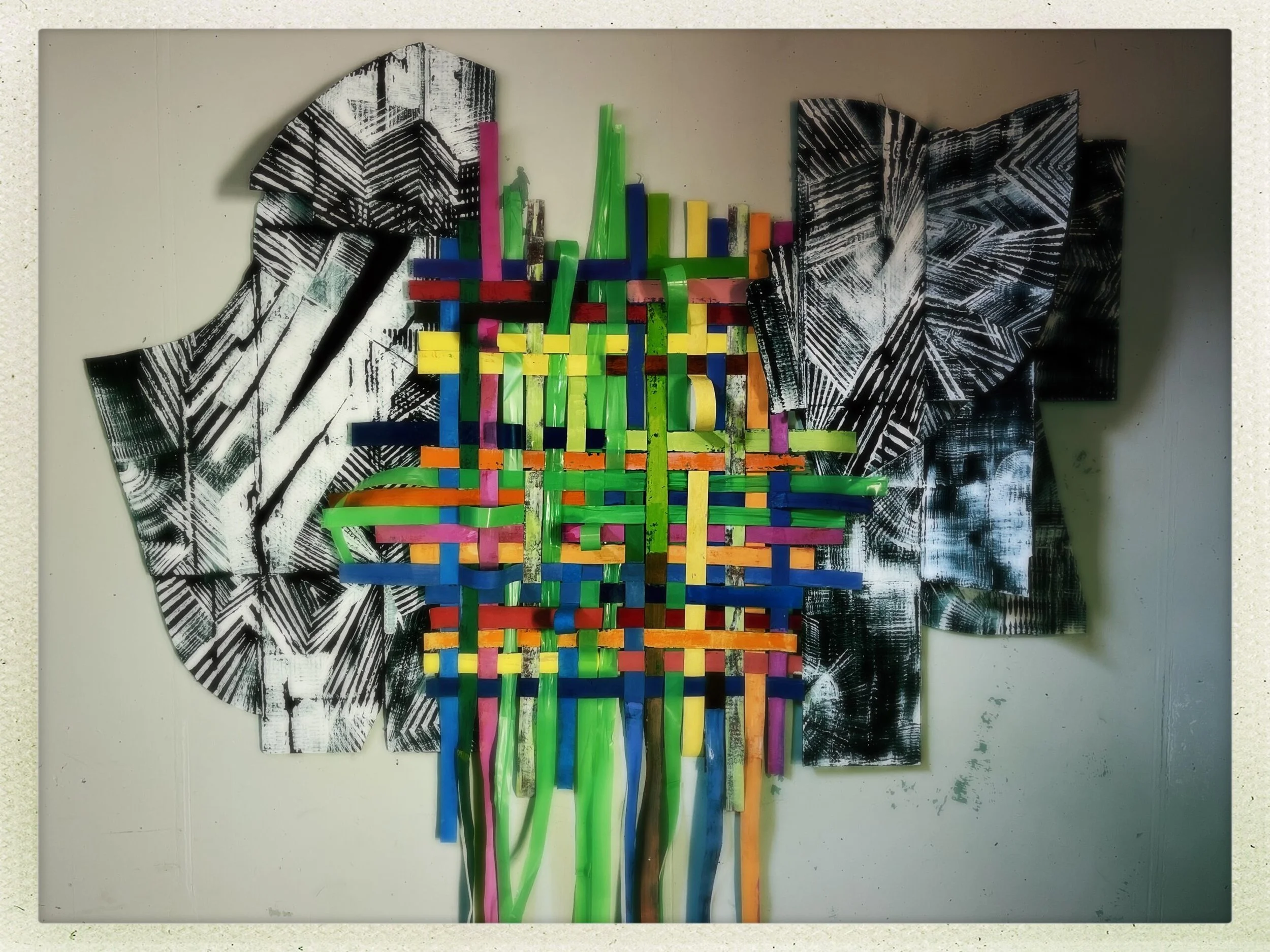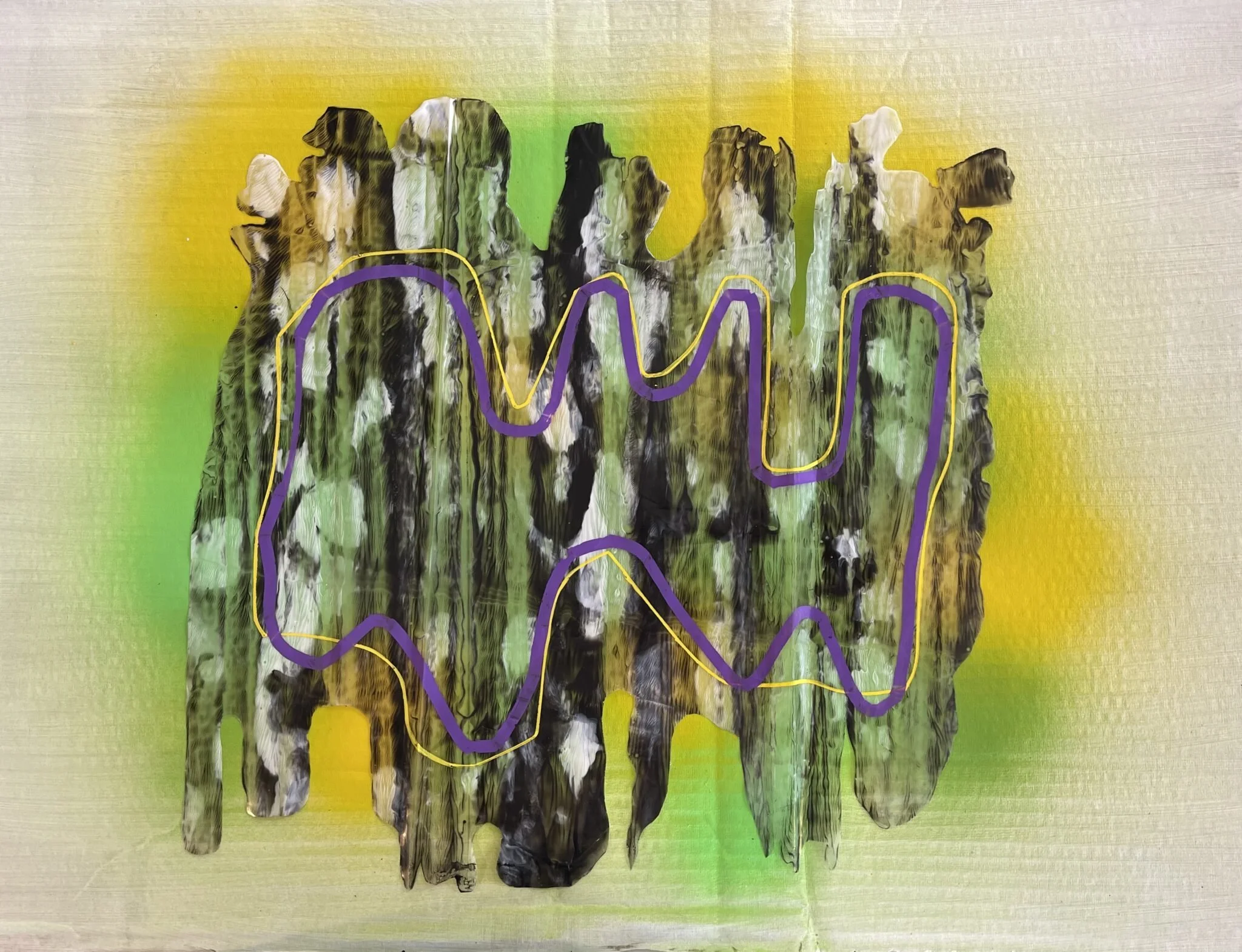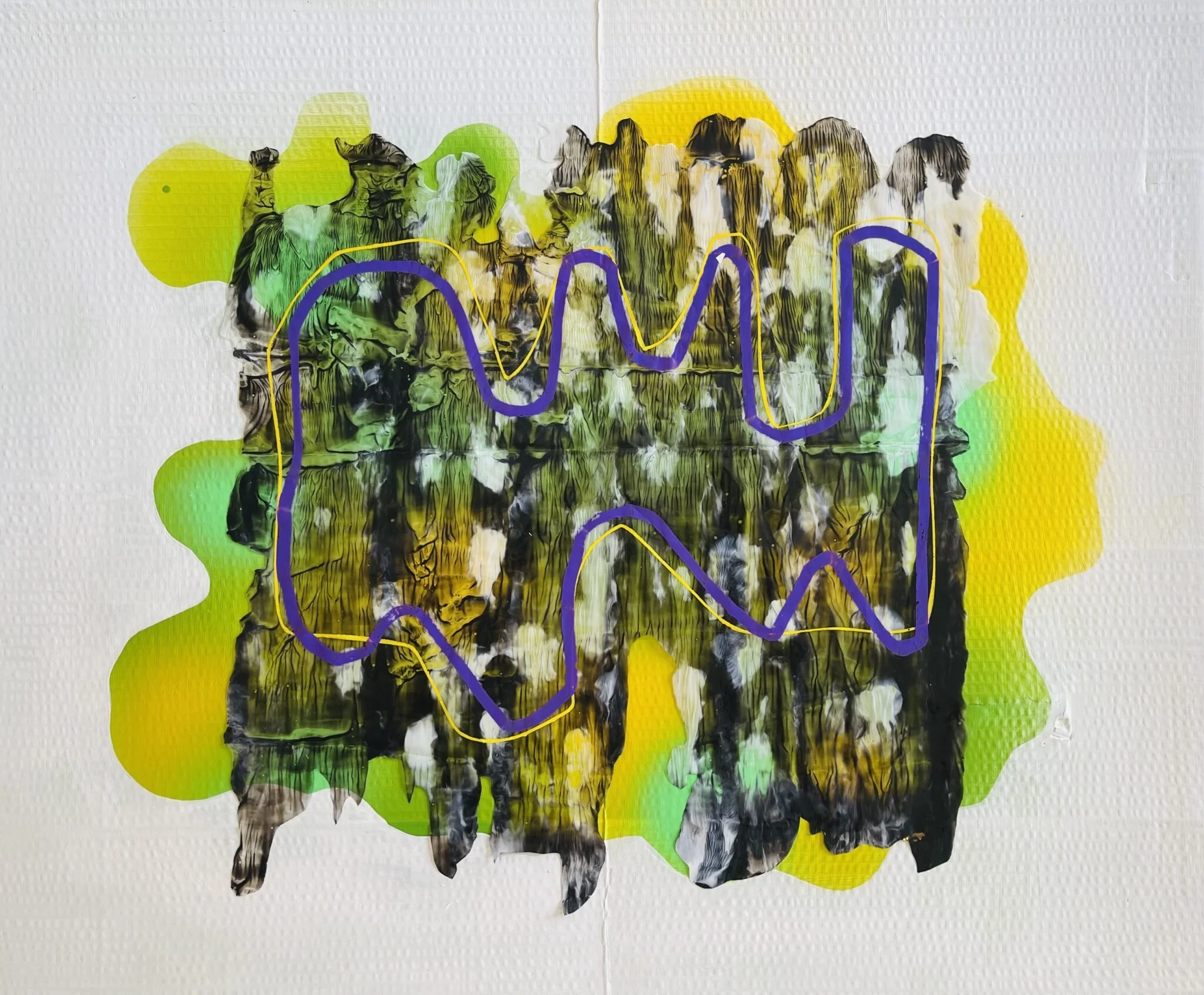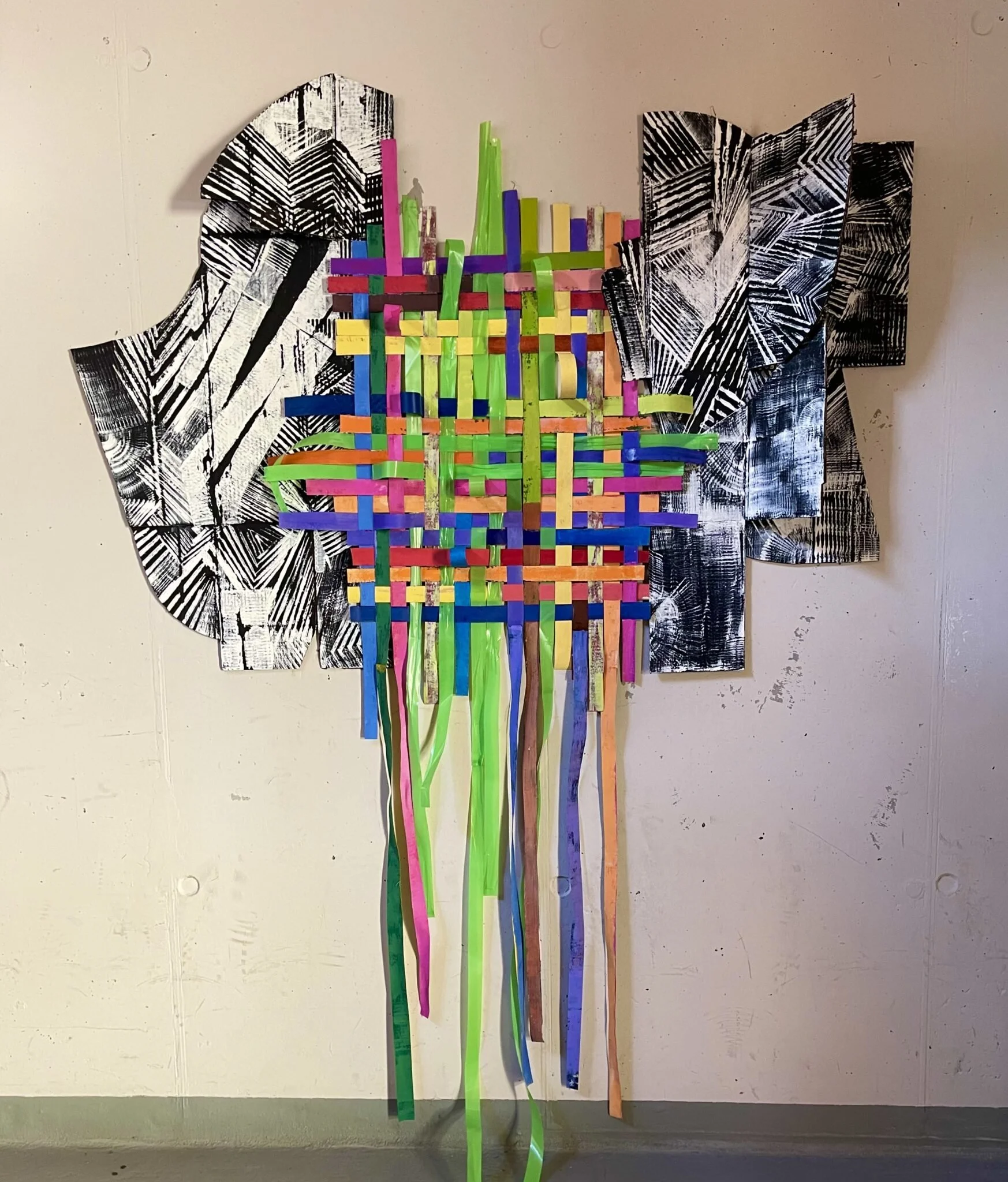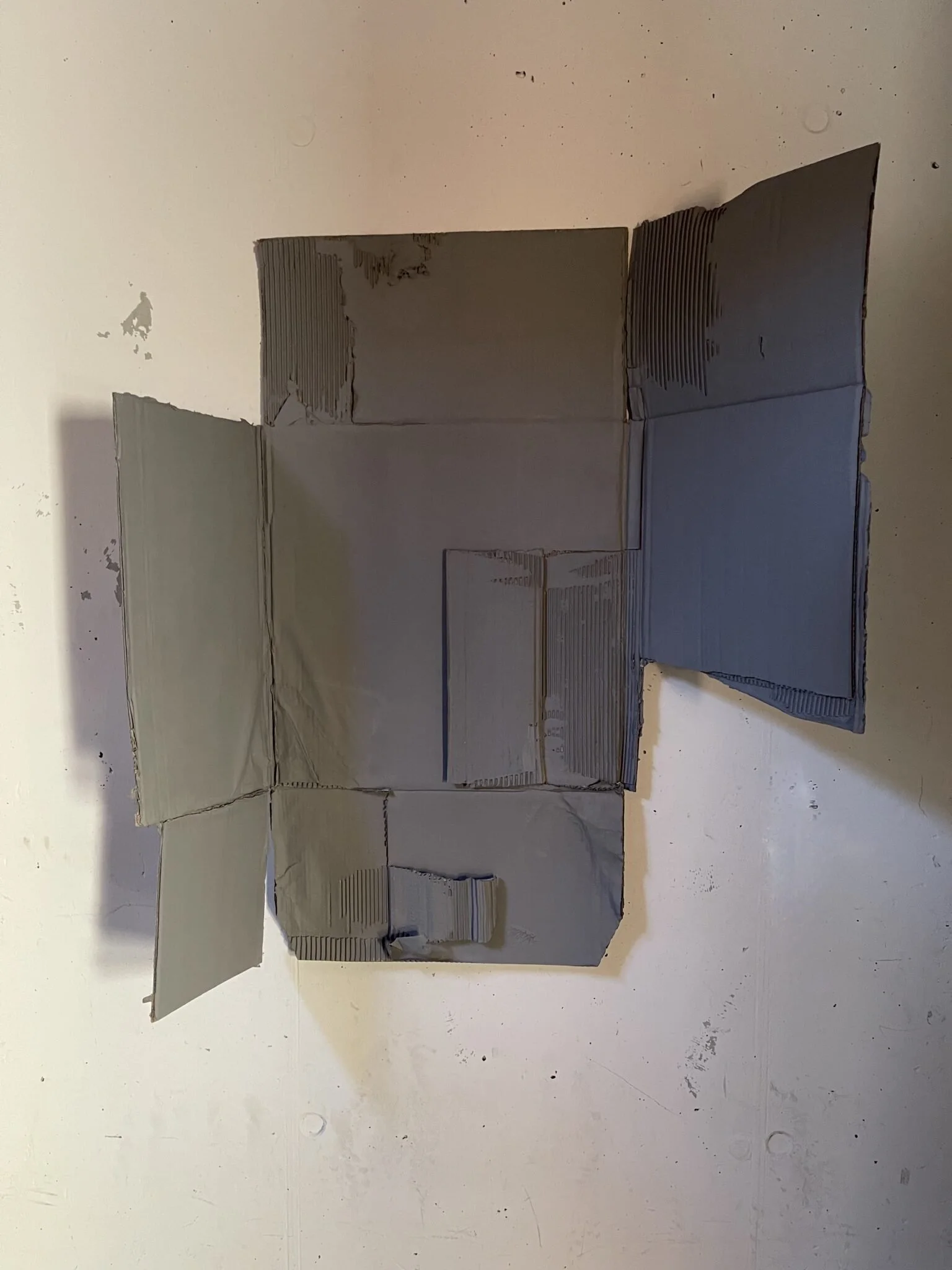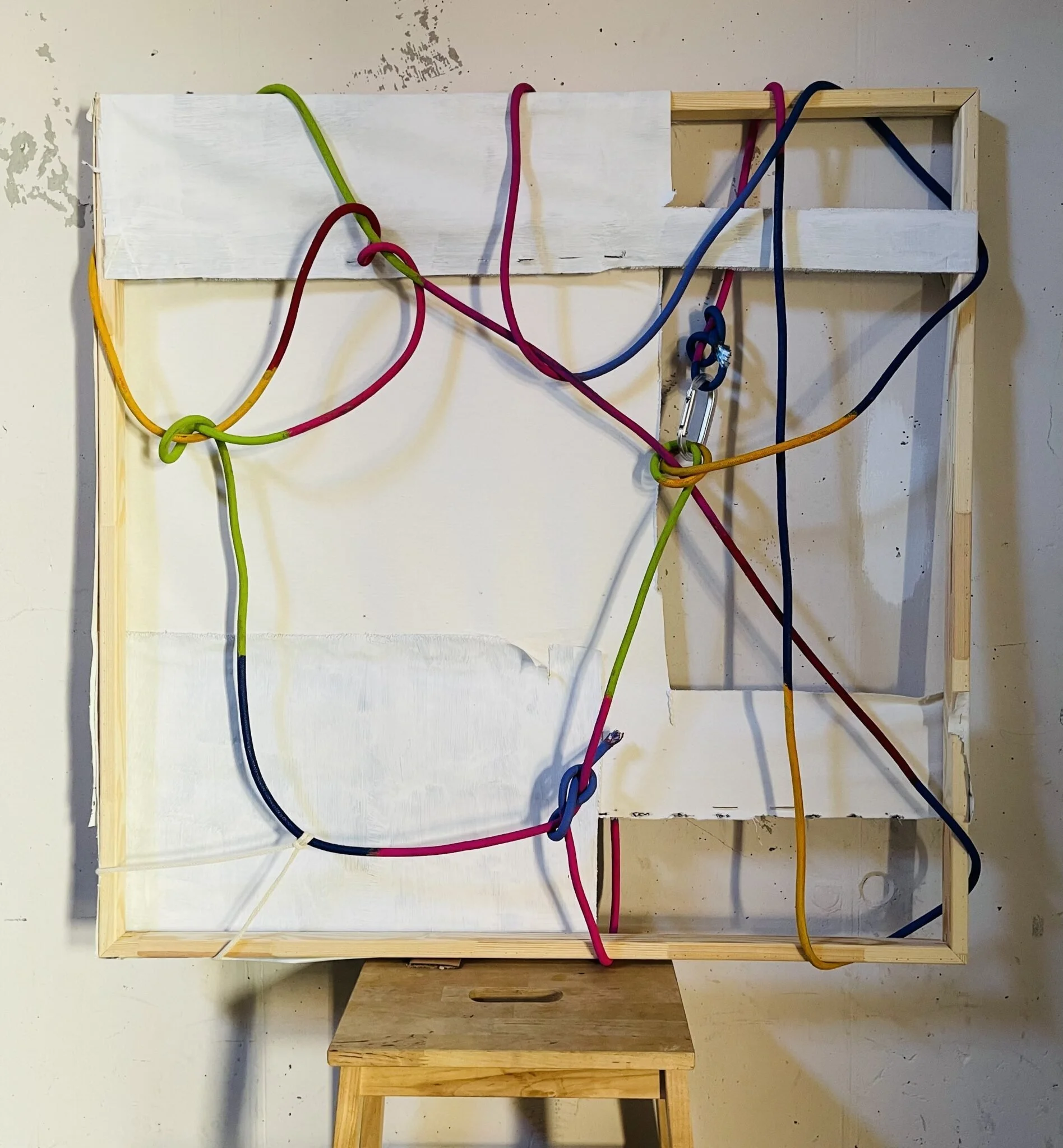Cover Image Flockhart K, Extending Beyond Achaintre (2024)
Explore the ideas raised in your artist research materially to gain insight into the use of unexpected materials.
TAKESADA MATSUTANI
Fig.1 Flockhart K, Extending Beyond Takesada 1 (2024)
Takesada inspired me with the connection he has to his practice. Through physical contact, or the manipulation of the materials.
He also uses simple techniques. They look complex, but when you see the act of creation in his studio documentaries, they are refined acts.
His early work was also shaped by chance and that he tried to replicate in the studio. A lot of the techniques seemed to be about having control and then letting go of it.
I wanted to create a piece that had a personal connection to me, but that also simulated time. His laborious pencil drawings have the element of time within them from a daily practice of meditatively sketching marks onto a singular large scale piece of paper.
I take a daily hike in the mountains, and I repeat these trails and use the time for contemplation.
My piece is broken into 3 layers. Because the landscape is layered over time.
Control and Letting Go
The forrest walls rise up with a dense texture, and I used the paint pour printed on to plastic sheeting to manipulate a texture that resembled their rugged surface, against the softness of spray paint. The process of the paint pour, whereby you sandwich the poured polymer paint between two plastic sheets, and then peel the top layer upwards, resembles the notion of the rising up. it’s a powerful movement, it takes effort to pull and separate the paint, you feel the stretching and extending of the subject that emulates the forest wall as it extends above you from base level.
Element of Time
Lastly I added the 2 continuous lines which map the trails I take climbing into the forest. They are marked as if seen from above. Routine, rhythm, repeated.
Fig.1 Flockhart K, Extending Beyond Takesada 1 (2024)
CAROLINE ACHAINTRE
Fig.3 Flockhart K, Extending Beyond Achaintre (2024)
Achaintre creates a visual language that draws you in, using a symbolism in her work that encourages you to see her subject matter, but she manipulates it to a level of distortion that begins to confuse, and then ignite ideas.
She does the same with symmetry, it’s evident but on closer inspection, not quite there, and again you are confronted with uncertainty.
I wanted to acknowledge her tapestries. But as I have limited access to materials, I chose to use paper. I painted it over and over to achieve texture, but also to put myself into the work. The hours of layers are a nod to her industrious style of grafting.
I purposefully arranged the weaving of the paper strips with evident loops, to recognise her loose style of punching in the wool allowing mistakes and stray parts to add to the character of the work.
The shapes of the cardboard elements are inspired by animalism and tribal influences. I looked at the wing shaped compositions of her work, masks, and tribal colour schemes. The Zebra like patterns, and composed folds in the cardboard, which I manually sculpted to give not just depth, but also an interest to come closer and look around, to see behind the flaps, and investigate.
I liked using these materials, and techniques as recognition of her crafting background, but also how she started by using what materials were accessible to her. She wasn’t put off from not having traditional means to create. She began, and evolved and something original was born from that first inclination of taking your interests and just starting.
SERGEJ JENSEN
Fig.4 Flockhart K, Extending Beyond Jensen (2024)
This piece is inspired by Jensen’s desire to remove himself from his art, and his adversity to the art worlds infrastructure.
With his minimalist canvas’s he manages to reframe the perception of ‘useless’ materials by using traditional practices to give them value.
I was drawn to the work that had slight detail additions, that act like a clue, left by the artist to show that something has been considered when producing the work.
This piece is a study, so I wanted to make it as basic as possible, to portray the roots of an idea. And for me this process theory really matched the style of his work.
The thing I have laying around is cardboard. This universal product that is handled and utilised daily all over the world.
I deconstructed a large box and flattened out the template.
I wanted to reveal the inner structures too, but I didn’t want to rip it apart. So I leave it outside to be weathered, and nature to takes it’s course.
After 2 days of wet and dry cycles, it starts to reveal itself.
Now it’s just a piece of old damaged cardboard. But what if I take this and paint it. Apply a traditional technique, with traditional materials. If I take care to apply the paint in the cracks and creases. Giving it attention. Doing this with purpose.
And now if I mount it on the wall to be photographed.
Does this change the value of the work?
HELEN MARTEN
Fig.5 Flockhart K, Extending Beyond Marten (2024)
I wanted to connect to Martens theory that the environment is imbued with time, speed, memory, gravity.
To leave an idea uncalcified, open to interpretation.
And to create links, connections within the work, so there’s no visible separations between the materials, or hierarchies. Everything is important, everything is working, and everything is vulnerable. If the links are broken the piece is destroyed.
This gave me the idea to take the painting, in it’s most primitive form, as the canvas stretcher, and deconstruct it.
Then to reconstruct it’s engineered parts, but piece them back together in a way that shows the infrastructure and make it more vulnerable.
I used repurposed materials, and found items to make the piece. I like the idea of using something that has memory within it. An old piece of rope from a barrier fencing that I found after the snow melt. I painted it to make it represent the part of the painting that is “paint” I looped it around and joined it with an old climbing carabena to create connection, working parts, a link. The rope is strong, it holds the canvas stretcher together, but if the link is broken then the piece is vulnerable to falling apart.
I like how Martens work is colourful and visually attractive, but then becomes something complex and hard to understand. Until you search for deeper meaning and the technicalities then it is clever and playful.
I wanted to bring those qualities into the piece by using bright colour, hence painting the old rope.
List of Images
Cover Image Flockhart, K. (2024) Extending Beyond Achaintre. [Mixed media] In possession of: The author: Volleges.
Fig.1 Flockhart, K. (2024) Extending Beyond Takesada 1. [Mixed media] In possession of: The author: Volleges.
Fig.2 Flockhart, K. (2024) Extending Beyond Takesada 2. [Mixed media] In possession of: The author: Volleges.
Fig.3 Flockhart, K. (2024) Extending Beyond Achaintre. [Mixed media] In possession of: The author: Volleges.
Fig.4 Flockhart, K. (2024) Extending Beyond Jensen. [Mixed media] In possession of: The author: Volleges.
Fig.5 Flockhart, K. (2024) Extending Beyond Marten. [Mixed media] In possession of: The author: Volleges.
